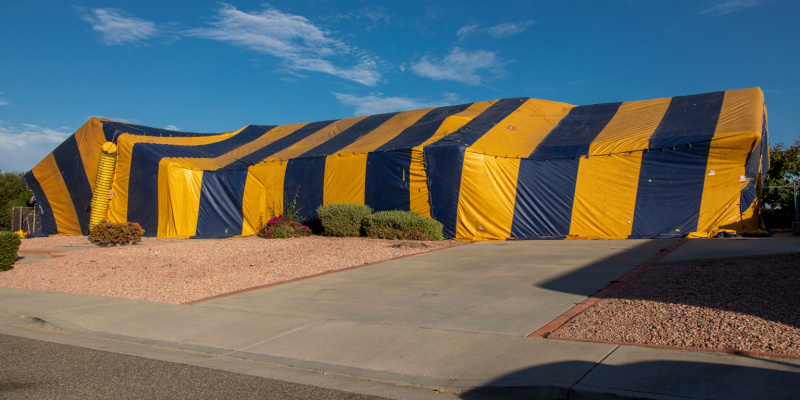Termite fumigation is a pest control method used to eliminate termites from structures and buildings, and unfortunately, in Monterey County, termites are a known problem for some homeowners. Termites, minuscule insects that feed on wood and cause significant damage to homes and other structures, are commonly found in warm, humid regions. They are distressing pests because they can inflict an incredible amount of damage to homes and businesses.
How Do I Know I Have Termites?
In general, there are three main signs that one should look for when trying to identify a termite infestation: visible damage to wood, mud tubes or tunnels, and swarms of flying insects.
Those who suspect an infestation should begin by looking for physical evidence of damage in their home or business. Termites prefer softwoods, so they often attack furniture and walls first. However, any exposed wood may have been affected by tiny pin-sized holes caused by termites eating away at the surface from within.
What Is Fumigation?
Fumigation is a process that involves the use of gases or vapors to kill pests. In the case of termite fumigation, the gas used is typically sulfuryl fluoride, also known as Vikane. This gas is highly effective at eliminating termites and other pests but also toxic to humans and pets. As a result, termite fumigation requires careful planning and execution to ensure the safety of humans and animals during the treatment process.
Before fumigation can occur, the treated structure must be sealed with a special plastic tent. This is necessary to contain the gas and prevent it from escaping into the environment. The gas is then injected into the structure through pipes or hoses and left to work for a specific period of time, usually a few days. After the treatment, the tent is removed, and the structure is ventilated to remove any remaining gas.
Advantages to Fumigation
There are several advantages to using termite fumigation as a pest control method. One of the main benefits is that it is highly effective at eliminating all types of termites, including subterranean, drywood, and dampwood termites. It is also a relatively fast process, taking only a few days to complete, and it can treat large areas at once. In addition, fumigation can reach termites that may be hidden in hard-to-reach areas, such as inside walls or under floors.
Drawbacks to Fumigation
However, there are also some potential drawbacks to termite fumigation. As mentioned earlier, the gas used in the process is toxic, so precautions must be taken to protect humans and pets during the treatment. Additionally, the process can be expensive and may not be suitable for all types of structures. Finally, while fumigation can kill termites, it does not prevent them from returning. Therefore, to prevent future infestations, it is important to implement other pest control measures, such as regular inspections and the use of bait stations or chemical barriers.
In conclusion, termite fumigation is a highly effective method for eliminating termites from structures and buildings. However, it is worth considering the process’s potential drawbacks and implement other pest control measures to prevent future infestations. Target Pest Control can help you decide whether fumigation is the best solution for your infestation problem. No matter the methods used, they will work hard to quickly eliminate these awful critters from your home.








